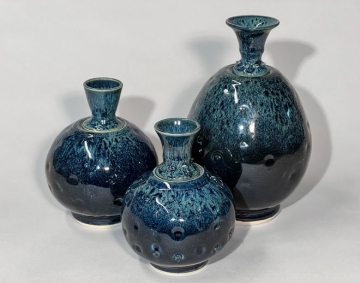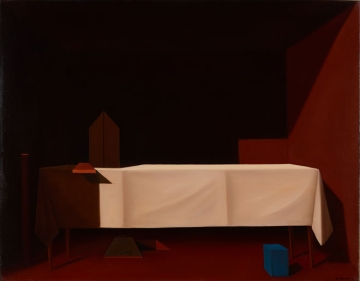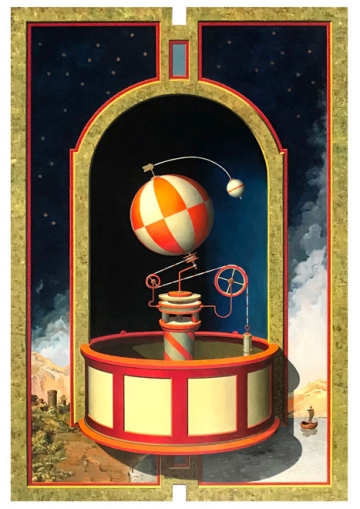Current and Upcoming Exhibitions
Rhode Island College 3-D Faculty Exhibition

- August 29-September 20, 2024
- Opening Reception - Thursday, August 29th, 4-7 PM, in the gallery
Bannister Gallery opens the 2024-25 exhibition schedule with our Annual Faculty Exhibition, which offers an opportunity for the community to experience first-hand the artistic talent that is in residence at Rhode Island College. These faculty artists are integral to the current aesthetic and conceptual dialogues present in our studio art department. Their practices include research-based and interdisciplinary methods that are at the core of contemporary art. RIC’s faculty artists exhibit widely and receive prestigious awards, grants, fellowships, and residencies. As a result, they encourage students by their example to think across boundaries. Collectively, these distinguished, award-winning artists bring a unique vision to the region’s cultural tapestry.
Enrico Pinardi

- October 3-25, 2024
- Opening Reception - Thursday, October 3rd, 4-7 PM, in the gallery
Enrico "Henry" Pinardi (1934-2021) taught in the Rhode Island College Art Department from 1967 to 1995. This exhibition, curated by Professor Dianne Reilly, celebrates his life and work.
Richard Whitten: Recent Paintings

- November 7-December 6, 2024
- Opening Reception - Thursday, November 7th, 4-7 PM, in the gallery
Richard Whitten creates paintings which transport the viewer through the surface of the painting into a world of imagined architectural spaces. There, the viewer finds similarly imagined machines. The views are invited to bring the worlds inside the paintings to life – to propel the machine into motion – through sight and thought alone. The machines Whitten depicts have a variety of possible functions and are often inspired by the inventions of Leonardo da Vinci and other Renaissance inventors. These machines tend to include elements that suggest motion, such as flywheels, gears, and ropes. It is Whitten’s belief that when the viewer tracks the potential movements of his machines, the paintings feel alive.
